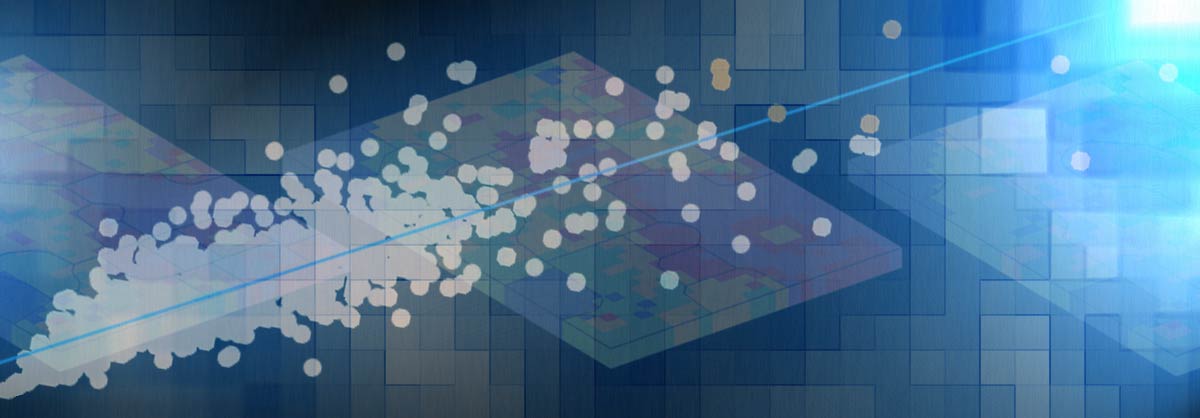March 2018 Issue Index
Make uncertainty work for you
Maptek recognises that uncertainty plays an increasingly important role in tactical and strategic mining studies and mine operational systems.
The world is more than complicated, it is complex! Maptek Core Technologies Product Manager, Chris Green provides some tips on how complexity can be embraced.
Fluctuations in the data within a typical mining supply chain are inevitable. Randomness, a standard geological feature of most orebodies, can be a source of confusion and frustration. Beyond those natural variations, we are confronted by the randomness of the human environment.
The problem is that almost all prediction work done within many sectors relies on the parameters of the Gaussian bell curve, which ignores large deviations and thus fails to take account of surprise results.
Humans are poor at factoring in the possibility of randomness and uncertainty. We forget about unpredictability when it is our turn to predict, and overestimate our own knowledge. We often desert the warning signs of our own intuition.
Uncertainty is the single greatest design flaw within the current mine operational mindset and our predictive systems.
We expect linearity in areas that are mostly non-linear. Systems tend to follow the same philosophy that has defined our scientific management systems which have dominated the corporate world since early last century. We are now clearly out of date in so many areas within this new era of big data and complexity.
This area of discussion is highly relevant today, and discussion forums are very active and at times emotional. However, there are avenues to explore in working with uncertainty and natural randomness.
Risk and Uncertainty are not the same.
Risk is where there is a set of possible outcomes within a system, and the probability of each outcome is known. Uncertainty is where there is an unknown set of possible outcomes, and the probability of each one is not known.
Probabilities and Uncertainty.
From a Bayesian viewpoint, probability is a measure that quantifies the uncertainty level of a statement. In the absence of information, all values are equally likely to occur and uncertainty is at a maximum.
The universe is an uncertain place and the best we can do is to make probabilistic statements about it. Whether the underlying reality is deterministic or stochastic, we are using probability as a tool to quantify uncertainty.
Use analytical techniques that work within non-linear environments.
Highly complex linear modelling techniques in non-linear systems should not be given greater credibility than they deserve. While useful for gaining a basic understanding, they are often no more valuable than a simple statistical study. To truly understand a dynamic non-linear system, you must adopt techniques that are built to handle such complexity and have a consciousness of history.
Prepare for multiple outcomes.
Rather than trying to make the one ‘right guess’ as to what will most likely happen, use a range of techniques to make multiple predictions, or scenarios. This is the way any truly innovative process works, and innovation is a good analogy for prediction. In addition, predictions generate history, and history should be an input into all further prediction and decision processes.
Focus your evaluation of initiatives on the inputs, not just the outputs.
Randomness will confound even the best efforts to produce trustworthy results. When assessing the success of an initiative, consider the quality of the decision to undertake it. Don’t rely solely on the actual outcome of the project (good or bad), but take into account the quality of the process that went into its planning and execution.
Remain agile, and strive to respond quickly.
There’s no substitute for intuition, awareness, listening, and detecting events as soon as they happen. Focus on ‘sense and respond’ as an organisation, and empower people to act quickly and decisively. A corporate policy that is strong on principle but general enough to be flexible will serve you well.
Talk to Maptek about risk and uncertainty and how we can solve your complex challenges.

